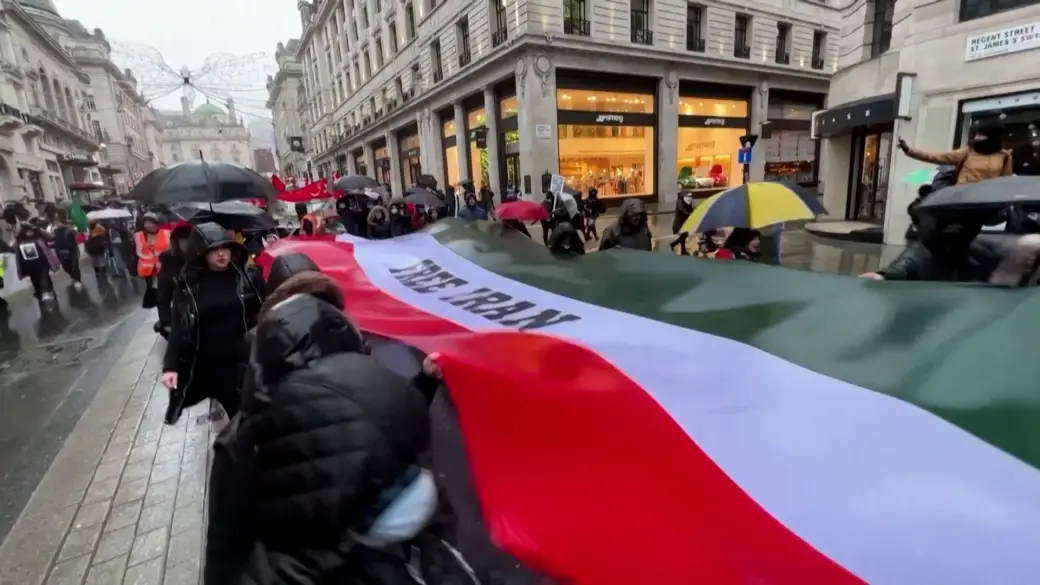Four months after the death of Mahsa Amini, civil unrest continues to play out in Iran despite the regime’s attempts to quash it.
The 22-year-old’s death at the hands of Iran’s morality police on Sept. 16, 2022, unleashed years of built-up anger in society over issues like the economy and discrimination against ethnic minorities, as well as strict social and political controls.
The protests have changed Iran and have threatened the regime, said Shahrzad Mojab, professor with the Women and Gender Studies Institute at the University of Toronto. Despite the government’s crackdown, the Iranian people are showing “defiance” by keeping their movement alive, she said.
“It is impossible to go back to the time before the killing of Mahsa Amini. The mark is there and it is not reversible, and it has to go forward,” Mojab told Global News.
“That is the reason that the government is so fearful of the demands of women and the entire population. Their demands are for freedom, democracy, equality, better lives and employment, change of the economic situation, poverty, inflation, corruption. These are the demands of the people.”
Public protests slow as Iran executes demonstrators
In recent weeks, Iran has handed down dozens of death sentences to intimidate Iranians enraged by Amini’s killing.
Last week, Iran‘s judiciary sentenced three protesters to death on charges of “waging war on God,” defying growing international criticism over its fierce crackdown on demonstrators.
Iran hanged two other people recently in its attempts to stamp out unrest.

Iran’s Supreme Leader Ayatollah Ali Khamenei has signalled the state has no intention of softening its position, saying that those who “set fire to public places have committed treason with no doubt.”
Under Iranian law, treason is punishable by death.
Human rights activists see Iran’s crackdowns as an attempt to intimidate protesters and strike enough fear in the population to end the unrest. Last month, Amnesty International said Iranian authorities are seeking the death penalty for at least 26 others in “sham trials designed to intimidate protesters.”
Despite Iran doubling down on repression, small-scale protests persist in Tehran, Isfahan and several other cities.
“The government is committed to this suppression, but people are also committed to fight back. It’s an equal power,” Mojab said.
“The government is brutally killing people with no fear, and people are standing against the government. It may not have that public presence, but it is happening right now. The fire is there.”
Iranian regime ‘in a very fragile state’
Economically, many in Iran are feeling the pain of high inflation and increased unemployment.
Inflation has soared to more than 50 per cent. Youth unemployment is high with more than 50 per cent of Iranians being pushed into poverty, according to reports by Iran’s Statistics Center.
There are no signs the regime is working on new policies to try and win over the public, instead focusing on crushing the protests.
Iran’s regime, which is the subject of numerous sanctions, is “in a very fragile state” but there’s no indication it’s about to topple, said Maral Karimi, author of The Iranian Green Movement of 2009: Reverberating Echoes of Resistance.
In 2009, unrest broke out in Iran following presidential elections. The protests, dubbed the Green Movement, saw many Iranians take to the streets, demanding change in Iranian society. The movement eventually fizzled out as the government cracked down.

This time around, the regime doesn’t have the same ideological legitimacy, political capital or economic power, and the demonstrations have exposed “gaps and cracks” in Iranian society, such as the repression of women’s and minorities’ rights, she said.
“At times of sociopolitical eruption, society gets this explosion of education. All of a sudden, there is immense awareness about the unfairness of the Islamic Republic’s laws when it comes to women,” Karimi said.
“There is no way that the state can force them to unlearn that education, but whether or not the regime is going to be toppled, that remains to be seen.”
What role can Canada play in supporting protesters?
Canada and its allies have levied sanctions against many Iranian officials and entities as the protests play out.
So far, the federal government has imposed sanctions on 127 Iranian individuals and 189 Iranian entities, including the Islamic Revolutionary Guard Corps (IRGC) and the regime’s security, intelligence and economic apparatus.
Canada can take the “global lead” in action against the Iranian regime, not only due to the large Iranian-Canadian population in the country, but also because of Flight PS752, Karimi said.
One hundred and seventy-six people were killed when Iranian officials shot down a Ukraine International Airlines jetliner in January 2020 shortly after it took off from Tehran.
Most of the passengers were bound for Canada via Ukraine, including 55 Canadian citizens and 30 permanent residents.
“Canada and the international community need to move beyond sanctioning just individuals and sanction institutions, such as the IRGC,” Karimi said.
As for the current protests, Mojab said she feels they will escalate as the Feb. 11 anniversary of the 1979 Islamic Revolution nears.
“The more they execute younger people in these summary executions that they are doing, their hope is to create more fear, but people are coming back and they will not keep quiet anymore,” she said.
“And especially with the worsening of the economic situation, people have nothing to lose so they will be on the street, they will protest.”










